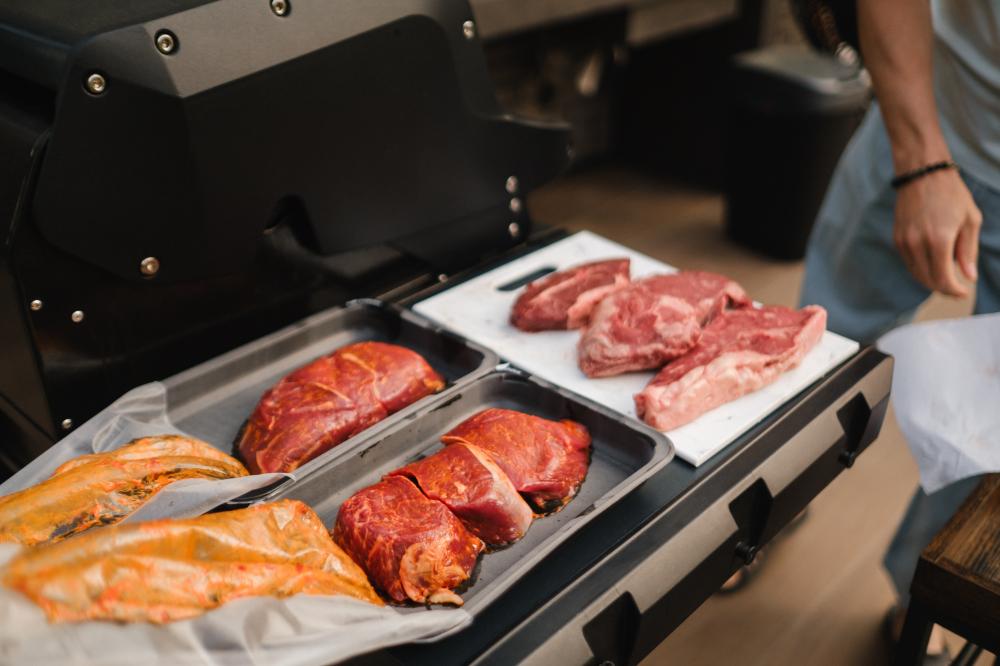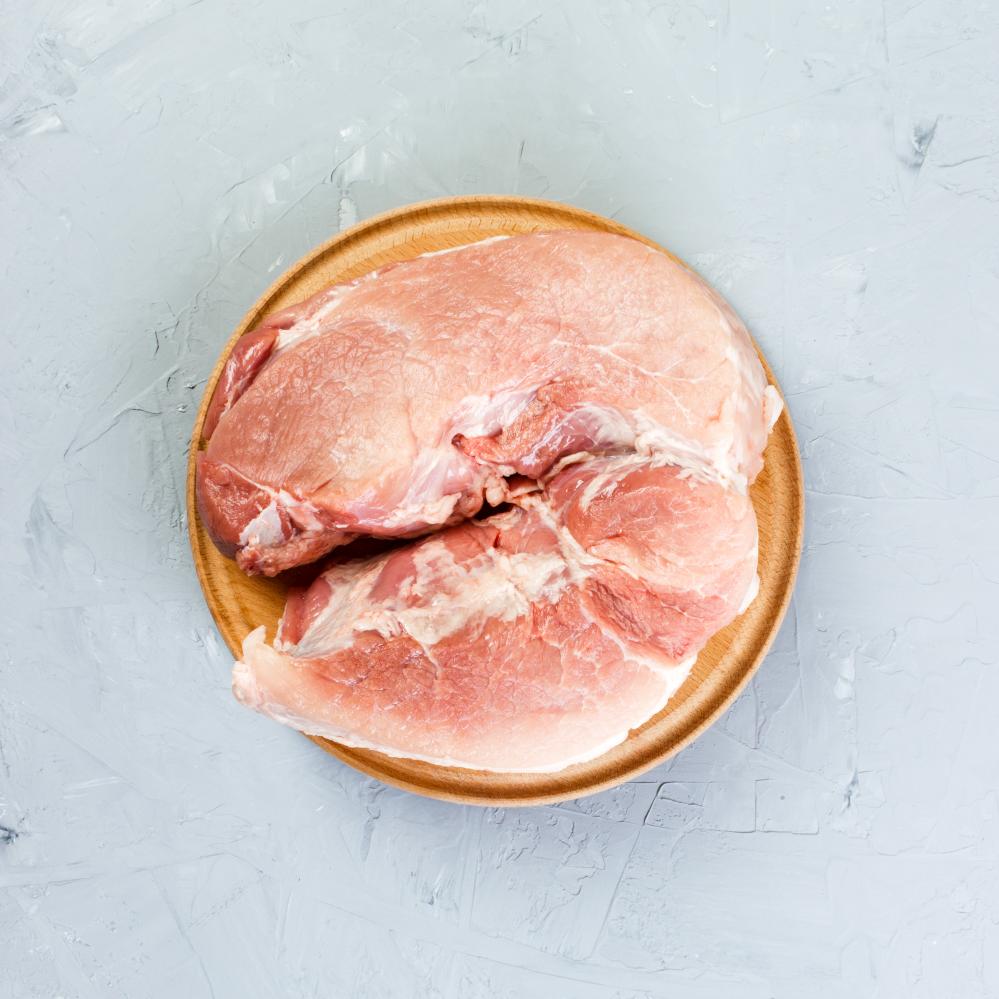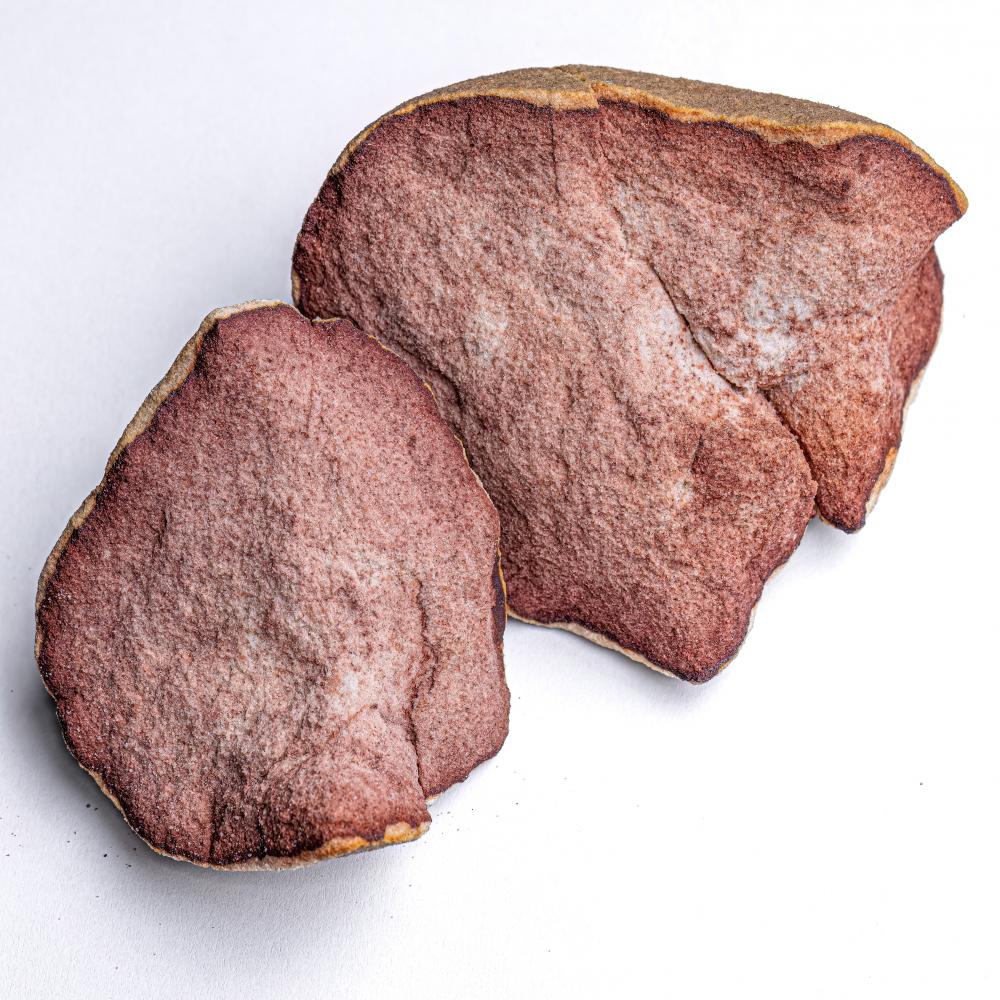
Preparing the Cooler
At Brisket Pro, we’ve discovered that knowing How To Rest a Brisket in a Cooler is as much an art as it is a science. The first step towards achieving that melt-in-your-mouth brisket is ensuring your cooler is prepped and ready. This is crucial for maintaining the optimal temperature to let your brisket rest adequately without losing its juiciness.
Start by bringing the cooler up to a warm temperature. This can be done by filling the cooler with hot water, allowing it to sit, then draining it right before the brisket is ready to be placed inside. This step ensures a warm and stable environment for the brisket to rest in, keeping it out of the temperature danger zone.
Wrapping the Brisket
Once your brisket is cooked to perfection, the next pivotal step is wrapping. This practice is not only about retaining heat; it also plays a significant role in ensuring your brisket remains moist and flavorful. At Brisket Pro, we recommend using either butcher paper or aluminum foil for this purpose. Each material has its own set of benefits, but both are effective in locking in those precious juices.
Butcher paper is breathable, allowing smoke flavor to continue permeating the meat during the rest, whereas aluminum foil creates a tighter seal, potentially speeding up the resting process by retaining more heat. The choice ultimately depends on personal preference and the specific characteristics you want your brisket to have.
The Actual Rest
The moment of truth in our guide on How To Rest a Brisket in a Cooler hinges on this phase. Placing the wrapped brisket in the preheated cooler does more than just maintain the temperature. It allows the meat’s fibers to relax, reabsorbing the juices that have been pushed out during the cooking process. It’s a crucial step that transforms a good brisket into an unforgettable one.
To enhance this process, consider adding a layer of towels around the brisket. These serve as additional insulation, further stabilizing the internal temperature of the cooler. Monitoring the brisket’s temperature is crucial during this stage; a meat thermometer is your best friend, ensuring the brisket remains above 140°F, the threshold below which bacteria can proliferate.
At Brisket Pro, we’ve found that a rest period of about 2 hours strikes the perfect balance between texture and warmth, but this can vary based on the brisket’s size and the cooler’s insulation quality. The key is to observe and adjust based on the brisket’s internal temperature, ensuring it never dips into unsafe zones.
Beyond the Basics
The Secret to Maintaining the Bark: One common concern with resting brisket in a cooler is the potential for the bark to soften. At Brisket Pro, we’ve experimented with various techniques to preserve that sought-after crust. A quick sear on a hot grill just before serving can reinvigorate the bark, adding back some of that beloved texture.
The Final Touches: When you’re ready to serve, taking the brisket out of the cooler and unwrapping it should be done with care. If you’ve used a disposable pan inside the cooler to catch any drips, don’t forget to drizzle those accumulated juices back onto the brisket. It’s a simple step, but it’s the kind of detail that elevates the final product.
- Always ensure your cooler is clean and free of any odors before using it for resting your brisket.
- Consider the size of your cooler; it should accommodate the brisket comfortably alongside towels for insulation.
- Remember, patience is a virtue. The resting phase is integral to achieving the perfect brisket texture and flavor.
Incorporating these insights and techniques from Brisket Pro into your barbecue routine will not only improve your brisket but also elevate your status among your BBQ peers.

Understanding the Rest Time for Pork Butt
At Brisket Pro, while our specialty might be brisket, we can’t overlook the intricacies of cooking other types of meat – like pork butt. One common question we encounter is, How Long To Let Pork Butt Rest. The rest period is a critical phase in the cooking process, dramatically affecting the meat’s tenderness and juiciness. Let me share insights from years of smoking meats and why resting is not a step to be skipped.
The ideal resting time for pork butt ranges from 1 to 2 hours. This duration allows the meat fibers to relax and reabsorb the juices that have been mobilized by the heat of cooking. It’s a kind of magic that happens off the heat, transforming a good roast into a great one.
In my experience, a pork butt that hasn’t been allowed to rest adequately can result in meat that’s tough and lacks moisture. This is why, whether it’s for a family dinner or a barbecue competition, I always preach the importance of patience during the resting phase.
Techniques for Resting Pork Butt
Wrapping Techniques
Choosing whether to wrap your pork butt can significantly impact the outcome. Wrapping in aluminum foil or butcher paper is a method praised by many for pushing past the stall. However, it’s vital to consider the effect on the bark. Wrapped too tightly or left for too long, and you might find the once-crispy exterior has softened more than you’d like. Personally, I’ve found a happy medium by tenting the pork butt loosely with foil, allowing it to retain heat without compromising the bark’s texture.
Using a Cooler as a Faux Cambro
A strategy I often employ involves using a cooler to rest pork butt. If you don’t have a professional kitchen’s cambro, a cooler can work wonders. After wrapping your pork butt, place it in a pre-heated cooler to maintain temperature. I go the extra mile by filling empty spaces with towels, ensuring minimal heat loss. This setup can keep your pork butt in the ideal temperature range for hours, providing a flexible window to serve the meat at its prime.
Common Questions Around Resting Pork Butt
How Long To Let Pork Butt Rest if you’re short on time? In situations where time is of the essence, even a 30-minute rest can make a significant difference. However, for optimal results, aim for at least an hour. Understand that the resting phase is as crucial as the cooking itself.
What if you let pork butt rest too long? Ideally, you shouldn’t let pork butt rest for more than 5 hours, as you risk the meat cooling down too much, which could affect its texture and warmth when served. Utilize a cooler to extend the resting period if needed, but always aim to serve the pork butt while it’s still within a desirable temperature range.
In conclusion, understanding How Long To Let Pork Butt Rest and employing the correct techniques can elevate your barbecue from good to unforgettable. Each piece of meat is an opportunity to create a memorable meal, so take the time to rest it properly. Through trial, error, and patience, you’ll find the method that works best for you and your BBQ style.
Understanding Brisket Rest Time
At Brisket Pro, we believe in the art of patience, especially when it comes to the crucial step of brisket rest time. Letting your brisket rest post-cooking is not just a suggestion; it’s a cornerstone of achieving that melt-in-your-mouth perfection. Resting allows the juices within the meat to redistribute, ensuring each slice is as flavorful and tender as possible. But how long should this rest be? The brisket rest time is a topic surrounded by much debate and personal preference, yet a consensus exists around a minimum of one hour. However, we’ve found through both professional experiences and countless backyard BBQs that a two-hour rest can elevate a good brisket to a great one.
When it comes to brisket rest time, the method can be as critical as the duration. Many BBQ aficionados swear by the faux Cambro method, utilizing a preheated cooler to maintain the meat’s temperature during its rest. Alternatively, resting the brisket unwrapped at room temperature can also yield excellent results, particularly if you’re aiming to preserve a crisp bark. Choosing between these methods often depends on your specific circumstances, such as the outdoor temperature or the time available before serving.
Personal Insights on Brisket Rest Time
Wrapped vs. Unwrapped
One question we often encounter is whether to rest the brisket wrapped or unwrapped. In my own BBQ journey, resting the brisket wrapped in butcher paper or aluminum foil has consistently provided outstanding results. This method aids in retaining moisture and heat, promoting further breakdown of tough connective tissues. It also contributes to a phenomenon known as carryover cooking, which gently finishes the cooking process, making the brisket even more tender.
Common Missteps
A common misstep many newcomers to brisket smoking make is underestimating the importance of brisket rest time. Rushing to slice the brisket immediately after cooking can lead to a dryer, less tender meal, as the juices haven’t had sufficient time to redistribute throughout the meat. Another often overlooked factor is the ambient temperature. If resting your brisket outdoors, ensure it’s kept out of the danger zone (40°F to 140°F), where harmful bacteria can proliferate.
Embracing the Wait
Brisket rest time is an opportunity to enhance the flavors and textures of your meat significantly. Whether choosing to rest your brisket in a cooler, Cambro, or simply at room temperature, remember that this step is integral to the BBQ process. Through trial, error, and patience, you’ll find the method that works best for you. At Brisket Pro, we encourage you to embrace the wait. Letting your brisket rest might test your patience, but the reward of a perfectly juicy and tender brisket is undoubtedly worth it.
Including brisket rest time as an essential step in your BBQ routine can transform your brisket from merely good to absolutely unforgettable. Each brisket has its unique characteristics, and as you gain experience, you’ll start to develop an intuition for how long and how to rest your specific cut. The key takeaway? Never skip the rest; your taste buds will thank you.
- Minimum brisket rest time: 1 hour
- Preferred brisket rest time for optimal results: 2 hours
- Methods: Cooler (faux Cambro), Cambro, room temperature
- Wrapped vs. Unwrapped: Both methods have their benefits

How long can you let a brisket rest in a cooler?
As a seasoned expert at Brisket Pro, I can assure you that the duration you let your brisket rest in a cooler is pivotal to achieving that signature tenderness and juiciness we all crave. Typically, anywhere from 1 to 4 hours is recommended, but in my experience, resting a brisket for up to two hours strikes the perfect balance. However, with proper insulation, like wrapping the brisket in towels and ensuring your cooler is pre-heated, it’s entirely safe and beneficial to extend this rest period up to 4 hours. This extended rest allows the brisket’s fibers to relax fully and reabsorb their juices, ensuring every slice is moist and flavorful. But remember, maintaining the internal temperature above 140°F is crucial to prevent any bacterial growth. Have you ever let your brisket rest for longer than 4 hours? What was your experience?
What is the best way to rest a brisket?
Resting a brisket is an art form that can significantly impact the final outcome of your barbecue. At Brisket Pro, we’ve experimented with various methods, and I’ve found that resting the brisket in a pre-warmed cooler, wrapped in butcher paper or aluminum foil, is incredibly effective. This technique, often termed the faux Cambro method, helps maintain the brisket’s temperature while allowing it to continue cooking gently through carryover cooking. The butcher paper, in particular, offers a breathable option that doesn’t trap too much steam, preserving the bark’s texture. Wrapping the brisket also aids in preserving those juices, contributing to a more tender and flavorful brisket. How do you prefer to rest your brisket, and have you noticed differences in outcome based on the resting method?
How do you rest meat in a cooler?
Resting meat in a cooler, particularly large cuts like brisket or pork butt, is a technique I’ve honed over the years at Brisket Pro. The process starts by pre-warming your cooler with hot water to create a stable environment that mimics a Cambro. After draining the cooler, wrap your meat–ideally in butcher paper or foil–then place it in the cooler. I like to add a layer of towels around the wrapped meat for additional insulation. This setup acts as a rudimentary but effective insulation chamber, keeping your meat at an optimal temperature for resting. The key is to ensure the cooler isn’t opened frequently, maintaining the internal environment as stable as possible. Do you use any additional techniques or materials to rest your meat in a cooler?
Should I rest my brisket wrapped or unwrapped?
This is a common question that we tackle at Brisket Pro, and it boils down to personal preference and the specific outcomes you desire. Resting the brisket wrapped in butcher paper or aluminum foil can significantly retain its moisture, leading to a juicier brisket. The wrap helps to trap in heat, which can speed up the resting process while still allowing the brisket to reabsorb its juices. On the other hand, resting the brisket unwrapped, especially at room temperature, can help preserve a crispier bark. However, you risk losing some heat more rapidly. In my experience, wrapping in butcher paper offers a happy medium, allowing some breathability while still retaining enough moisture and heat. Ultimately, it depends on whether you prioritize moisture or bark texture in your brisket. Have you tried resting your brisket both ways, and if so, what differences have you noticed?
Resources
- United States Department of Agriculture Food Safety and Inspection Service – Visit this website for essential information on food safety to ensure your brisket is properly handled and stored.
- FoodSafety.gov – Learn about safe food storage practices and guidelines to maintain the quality of your brisket.
- University of Minnesota Extension – Find detailed instructions on how to safely rest meat in a cooler to retain its juices and flavors.
- NHS (National Health Service) – Meat and poultry nutrition – Discover the nutritional value of different types of meat, including brisket, to make informed dietary choices.
